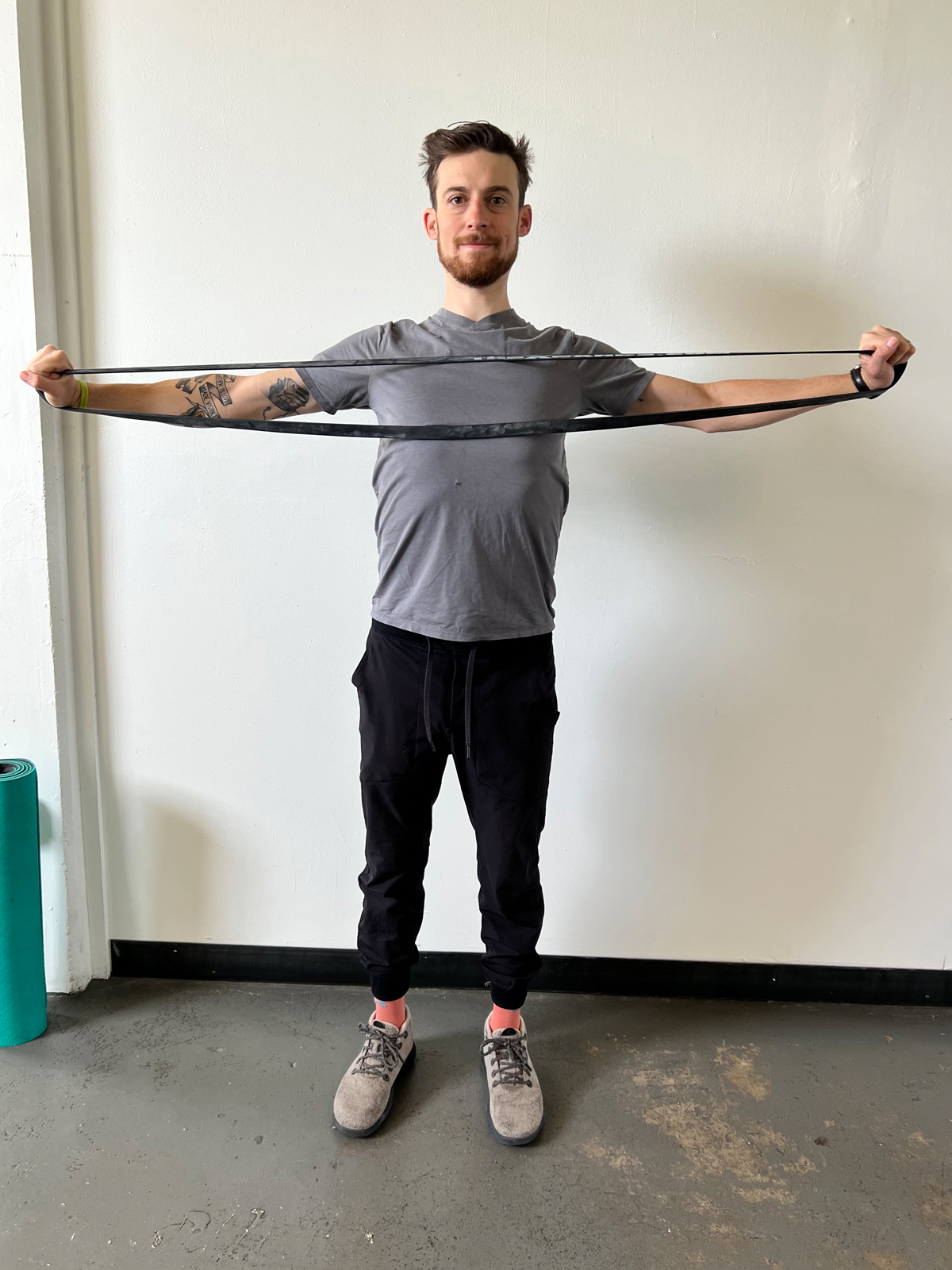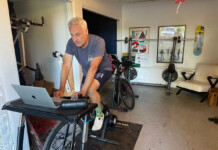By Pat Casey — Despite cyclists’ immense focus on their lower body strength, stability, mobility, and endurance, they commonly neglect their upper bodies. However, postural alignment issues from complacent adaptations are the source for many common aches and pains while training and racing, and even in everyday life. This can be due to a perception that cyclist’s don’t “use” their upper bodies for pedaling, and therefore don’t need to strengthen areas that don’t directly push the pedals. Riders also express a reluctance to perform strengthening of the back, chest and arms out of fear of bulking up – gaining hypertrophy in muscles that will add weight to their lean physique. Cyclists are riddled with fear that they might do something to hurt their power to weight ratio. In other words, upper body strength for cyclists is a taboo.
Since the bike is not the most anatomically “accurate” position for the human body, it can exacerbate pre-existing issues in our posture. The impact of our jobs and lifestyle on our bodies do not fix themselves on the bike. Often, they get worse and they feed the cycle in other areas of everyday life. Modern technologies and work demands that plop us in front of a computer, phone, or other device for 40+ hours a week perpetuate forward head carry, which is a pervasive issue for neck pain and shoulder/chest tension. Not to mention the detrimental effects that being seated 40+ hours per week can have on the glutes and hamstrings, and on the compressed nature of the spine, hips and abdomen. Riders don’t usually address these areas until there’s an issue that’s affecting their riding experience. Regardless of an existence of issue, the complacencies in our posture and habitual movement patterns have an effect on our physiology and might be hindering basic neurological and biological functions.
Strength in the lats, shoulders, arms, and back body can dramatically improve our stability on the bike. Gaining strength can also improve recruitment from large core stabilizers which can also improve our power output. And finally, making improvements in upper body strength and stability can also improve our ability to decompress the spine, ribs, and shoulders to breathe more fully and efficiently. Below are a few helpful upper body strength and mobility techniques you can begin working on to improve your posture, reduce pain, and add to your performance on the bike! We will start at the top of the axial skeleton: the head and neck. We will then work our way down to provide a few ideas for you to add into your training routine and hopefully help you address some of the nagging issues you might be dealing with on or off the bike.
Exercises to try out – if you have experienced a traumatic injury in the spine, or are currently in chronic pain, consult with a medical professional before trying any of these movements.
Head Position and Strengthening the Neck:
Stand up straight with your feet hip width apart. Get as tall as you can. Now, Pull your chin IN making a double chin. At the same time, lengthen through the back neck. Hold this position for 15 seconds. Relax and repeat.


Scapular Retractions:
Position your hands shoulder width apart on a resistance band. With your hands outstretched in front of you, clasp the band and pull it laterally away from the body. You will squeeze the mid back, right between the shoulder blades. Each rep, complete a count of 2 at the end range of the movement. Then slowly bring the band back to center.



Decompression of the Thoracic Spine:
Lying on your belly, extend your arms in a Y position overhead. Place your fingertips in a half sphere into the floor. Pull your chin back, create length through your back neck. Then on an exhale, press into your hands, elevating the elbows and pull from the fingertips as if you’re trying to drag your body forward on the ground. You will feel your lats engage. Now repeat long, full breaths, each time deepening the pull of the hands overhead and try to breathe into the upper back between your shoulder blades.


Rowing:
Rows can be performed in a variety of ways. Maintain good spinal alignment and pull with your lats and upper back. Start out light to promote good form, or use resistance cords/bands to begin. Consider trying different hand positions more specific to your cycling discipline.

Push Up with T-Stabilization:
Perform a fairly standard push up: Position your hands about shoulder width apart, create pressure throughout your fingers. Lower down, engage, and press yourself back up with good spinal alignment. At the top of the movement, allow the feet to stack and open one arm towards the sky. Stabilize on this arm and control the movement going back down to a pushup position. Alternate for 10-20 repetitions or until you fatigue or cannot perform with good form.











